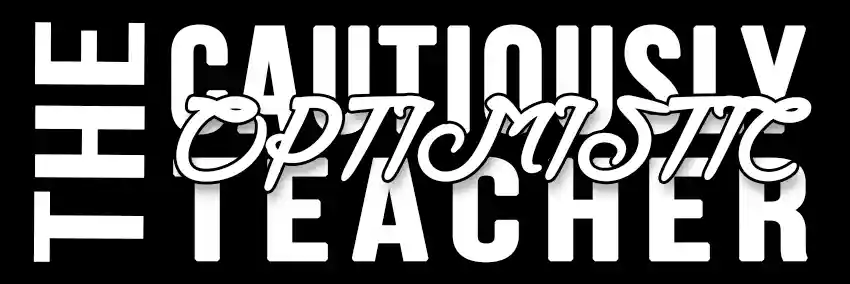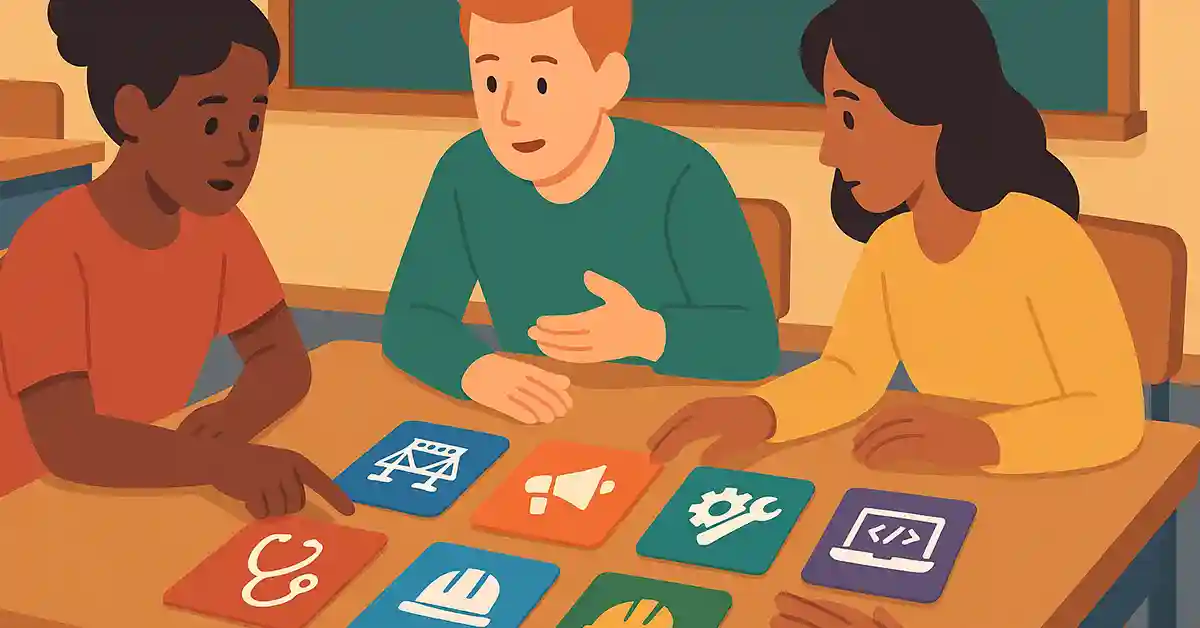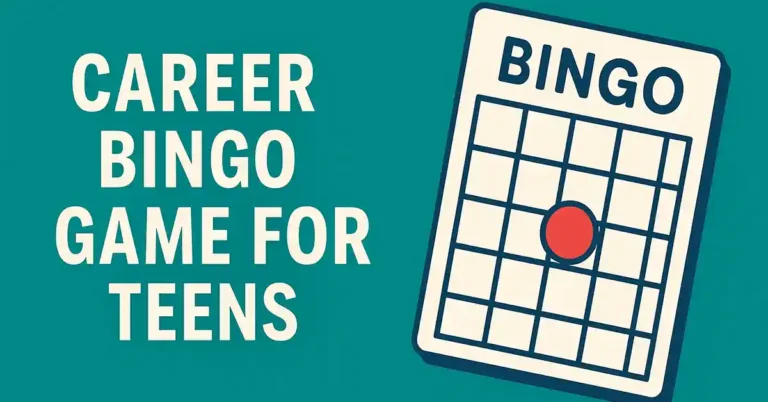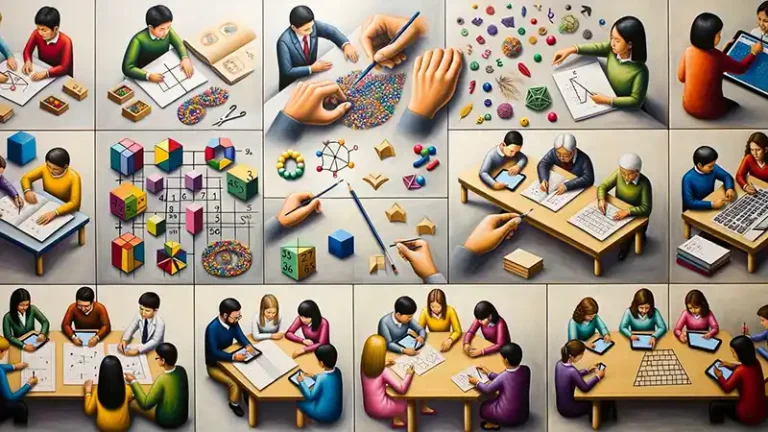Job Scenario Problem Solving: Sparking Critical Thinking
If there’s one thing I adore more than fresh stationery, it’s watching students light up when classwork finally feels “real.” Scenario-based learning does exactly that—it drops learners into authentic situations where their decisions matter. In this lesson I’ll show you how to turn job scenario problem solving into a dynamic activity that sharpens critical thinking, collaboration, and communication in one fell swoop.
Below you’ll find a complete lesson plan—no hunting for extra materials—plus fifty (yes, fifty!) workplace challenges you can print on cards and use tomorrow. Grab your metaphorical hard-hat; we’re heading into the working world.
Why Job Scenario Problem Solving Works
Authenticity breeds motivation. Students love tasks that mirror real careers.
Built-in differentiation. Scenarios can be scaled in complexity or tailored to student interests.
Cross-curricular gold. One card links English persuasion, STEM principles, and social-emotional learning.
Soft-skill rehearsal. Negotiation, empathy, leadership, and time management come baked in without a lecture.
Assessment you can see. Solutions (written or oral) reveal depth of understanding faster than multiple choice ever will.
Learning Goals
By the end of this lesson, students will be able to:
Analyze a workplace problem, identify constraints, and propose a viable solution.
Defend their solution using clear reasoning and relevant evidence.
Reflect on the decision-making process and consider alternative approaches.
Materials
A set of printed scenario cards (see list below).
Chart paper or slide deck for whole-class sharing.
Reflection sheets or digital journals.
Timers (optional, but they keep the pace snappy).
Step-by-Step Lesson Plan
1. Warm-Up (5 min)
Pose a quick-fire dilemma: “Your principal announces a school-wide talent show next week—no one has planned a thing. What should you prioritize first?” Let students brainstorm aloud to prime problem-solving muscles.
2. Scenario Card Distribution (5 min)
Shuffle the deck and hand each small group one card. Encourage them to own it—no swaps until they at least wrestle with the initial brief.
3. Deep Dive Discussion (15 min)
Groups unpack the challenge by answering:
What is the core problem?
What constraints or stakeholders are involved?
What resources do we have?
Cue them to jot ideas or sketch mind maps. Circulate and prod with Socratic questions.
4. Solution Development (15 min)
Now the creative juices flow: groups craft an action plan. Remind them that perfect answers rarely exist in messy workplaces—reasonable, flexible plans win.
5. Share-Out Carousel (10 min)
Groups rotate, speed-dating style, presenting a 60-second pitch. Peers fire off clarifying questions or quick kudos.
6. Reflection & Debrief (10 min)
Individually, students answer: “What was the toughest constraint, and what would you do differently with more time?” Close with a whole-class debrief connecting problem-solving strategies to upcoming assessments or real life.
Time-Saver Tip: Short on class minutes? Split the lesson across two periods—analysis today, solution share-out tomorrow.
Fifty Workplace Challenge Cards
Doctor: A patient refuses a life-saving blood transfusion for personal beliefs—what next?
PR Specialist: A viral tweet misquotes your CEO in a way that angers customers. Draft your immediate response.
Civil Engineer: Design a pedestrian bridge for a coastal city prone to 100 km/h winds.
Retail Manager: Black-Friday crowds exceed capacity and tempers flare—coordinate staff and crowd control.
Software Developer: A critical security bug surfaces hours before product launch—prioritize tasks.
Event Planner: The keynote speaker’s flight is cancelled on conference morning—salvage the schedule.
Teacher: Your class’s group-project grades were posted publicly by accident—repair trust.
Journalist: A confidential source retracts after publication—handle retraction ethically.
Veterinarian: During surgery you discover an unrelated life-threatening condition—contact the owner mid-procedure?
Restaurant Chef: A power outage hits mid-dinner rush—keep diners happy and food safe.
Air-Traffic Controller: Two flights request the same runway simultaneously during fog—decide fast.
Graphic Designer: A client loves your brochure but demands copyrighted images—educate and offer options.
Police Sergeant: Your team is understaffed during a city-wide protest—allocate resources.
Entrepreneur: Cash flow dwindles and payroll is due tomorrow—craft an immediate plan.
Construction Foreman: A sudden thunderstorm threatens site safety and schedule—act now.
Pharmacist: A teen tries to fill a prescription for narcotics that seems forged—handle legally and empathetically.
HR Manager: Two top employees request conflicting vacation weeks during peak season—mediate.
Social Worker: A family misses multiple support meetings; child welfare may be at risk—next steps?
Data Scientist: Stakeholders demand conclusions from incomplete data—set boundaries.
Museum Curator: A priceless artifact loan is delayed by customs—adjust exhibit marketing.
Paramedic: Multiple-car collision with limited ambulances—triage decisions.
Librarian: A parent challenges a book for explicit content—balance policy and community values.
Marketing Director: A competitor launches a flashy campaign that mocks your brand—respond strategically.
Financial Advisor: A client panics during a market dip and wants to liquidate—counsel wisely.
Urban Planner: Residents oppose a new bike lane citing parking loss—facilitate compromise.
Cybersecurity Analyst: Ransomware hits city hall—outline your incident-response protocol.
Flight Attendant: A passenger exhibits severe anxiety mid-flight—provide comfort and safety.
Film Producer: Your star actor breaks a leg two weeks before shooting—replan or recast?
Nurse: A language barrier hampers patient consent—secure accurate communication.
Game Designer: Players exploit a bug for unfair advantage—patch and manage PR.
Hotel Manager: Overbooking means turning guests away during a festival—mitigate damage.
Architect: Client insists on aesthetic choices that violate building codes—navigate diplomacy.
Nutritionist: A client wants a fad diet that conflicts with medical advice—educate tactfully.
Sports Coach: Star athlete violates team rules before playoffs—discipline without tanking morale.
Lawyer: Mid-trial new evidence undermines your argument—adapt strategy.
Supply-Chain Manager: A crucial shipment is stuck at an overseas port—quick contingency plan.
Interior Designer: Renovation uncovers asbestos, blowing the budget—re-scope with client.
Meteorologist: Predict a hurricane landfall path with limited data—communicate uncertainty clearly.
Podcast Host: A live guest makes offensive remarks—react in real time.
Spa Owner: Water heater fails on a fully booked day—maintain customer satisfaction.
Electrician: Client demands a shortcut that violates safety codes—educate and refuse?
Biologist: Field research equipment fails in remote rainforest—salvage data collection.
Translator: A diplomatic document carries cultural nuances that could offend—choose wording carefully.
Robotics Engineer: Prototype robot arm malfunctions during investor demo—keep funding hopes alive.
Real-Estate Agent: Inspection reveals mold in dream home—guide buyer decisions ethically.
Advertising Copywriter: Campaign slogan accidentally mirrors a competitor’s trademark—revise under deadline.
Oceanographer: Storms delay data retrieval from buoys—adjust research timeline.
Barista Manager: Sudden staff illness leaves one person on shift during morning rush—triage workflow.
Ethicist at Tech Firm: Algorithm shows bias in hiring—investigate and propose fixes.
Civil Rights Lawyer: New legislation threatens protest rights—craft a legal response strategy.
Differentiation & Extension Ideas
Choice Boards: Let groups select from three tiered scenarios, increasing in complexity.
Role-Play: Transform solutions into short skits for kinesthetic learners.
Subject Integration: In math class, quantify costs; in English, write persuasive memos; in art, storyboard solutions.
Community Experts: Invite a professional (via video call) to critique student solutions for authentic feedback.
Follow-Up Writing: Turn the reflection into a formal cover letter explaining how they solved the challenge—résumé skills activated!







